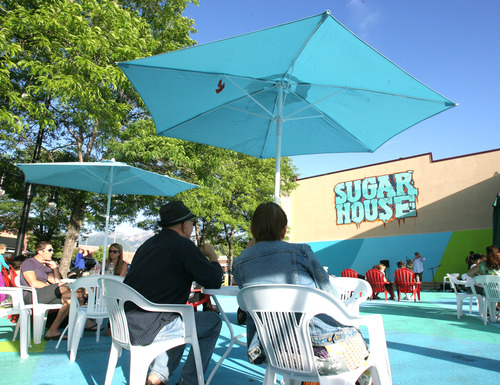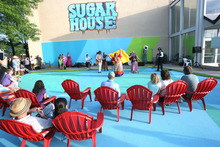This is an archived article that was published on sltrib.com in 2013, and information in the article may be outdated. It is provided only for personal research purposes and may not be reprinted.
A year ago, 30 Salt Lake City staffers and council members returned from a tour of Vancouver, British Columbia, with exciting prospects to enliven the public spaces of Utah's capital. Their mantra was "lighter, quicker, cheaper."
The notion was that in addition to such things as a Broadway-style theater and a soccer complex that take years to plan and finance, the city also could spark activity with strategically placed tables and chairs, kiosks, small music events and temporary plazas to liven things up a bit without breaking the bank.
The city has set aside $116,000 for such projects.
A year after Vancouver, City Council Co-Chairwoman Jill Remington Love says she would give the city a grade of D for implementation thus far of the "lighter, quicker, cheaper" plan.
"We're not failing," she said, "but we're not great yet."
Love noted, however, that it is an ongoing process and she continues to believe the program and other ideas brought home from the Canadian city will bear fruit in the near future.
By contrast, former council Chairman Soren Simonsen said he would give the city a B and noted that such things as the pop-up market in the Granary District and the temporary Sugarmont Plaza in Sugar House have been successful — both in the lighter, quicker, cheaper mode but financed through the city's Redevelopment Agency.
In the coming weeks, the council will adopt a more formalized funding procedure for "lighter, quicker, cheaper" called the "Community Improvement and Outreach Grant" pilot program, according to spokesman Dan Weist. It allows residents to decide how to spruce up their neighborhoods and apply for city funding.
Part of the "lighter, quicker, cheaper" approach is to try things without the fear of failure, Mayor Ralph Becker explained in an earlier interview. "We need to try things, see how they work, and adapt."
The mayor, along with council members, said they brought home many other ideas from Vancouver that are either in the works or about to be incorporated in city plans — most notably transportation open space strategies.
Love said the British Columbia trip was a success and worth the $55,000 expense. "The benefit is [the staff, mayor and council] all came home on the same page," she said. "It's a creative way to approach problem solving."
Vancouver has dedicated itself to bicycle transportation, Love said. That informed Salt Lake City planners as they seek to accommodate the dramatic growth in bicycle traffic here.
Simonsen added that Vancouver's approach to transportation led Salt Lake City to begin developing a citywide transit plan — something he believes is essential for short- and long-term transit solutions.
Not least, Councilman Luke Garrott noted that the public spaces designed in and around the planned Utah Performing Arts Center were, in part, an outcome of the Vancouver trip and its emphasis on public spaces. He pointed to the planning of Regent Street, directly east of the theater, as an example.
"That public space isn't just for theatergoers," he said.





